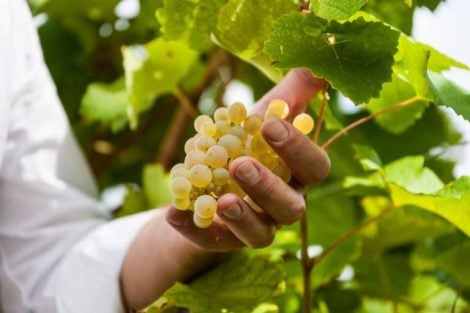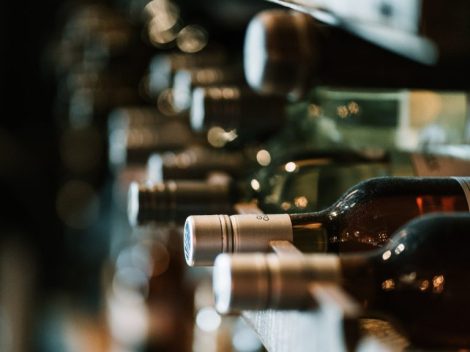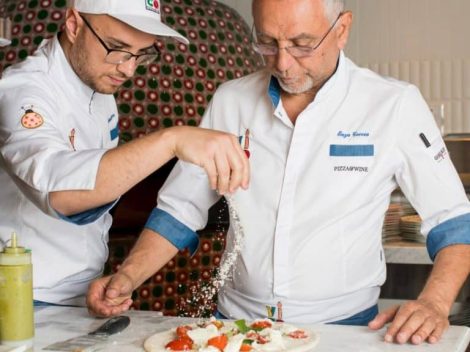Origins of the Easter eggs
Emblem of rebirth, but also of protection, Easter eggs are a must. Hard-boiled and painted to be placed in the centre of the table or made of chocolate containing a surprise: at least, this is what happens in Italy. How do they do it in the rest of the world? Before discovering traditions and rituals from abroad, here are some historical hints on their origin. A token of love between couples and a trophy for sportsmen in the Middle Ages, it wasn't until the 14th century that eggs, covered in gold leaf, became a typical Easter gift, as mentioned in the financial books of Edward I of England. To refine the art of decoration, Peter Carl Fabergé, goldsmith at the Romanov court, on the orders of Tsar Alexander III of Russia, in 1887 created eggs painted with enamels and embellished with precious stones, with a jewel inside, which then later became a collector's item.
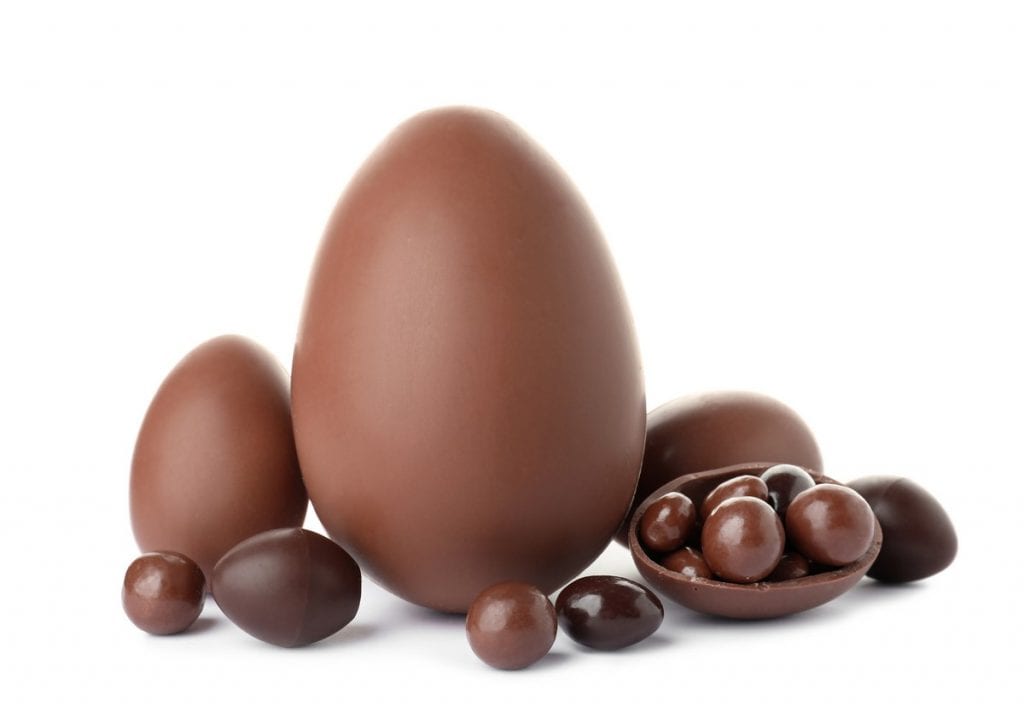
On the other hand, the origins of those made with chocolate are more uncertain: one of the most accredited hypotheses is that Louis XIV was the first to create them, a plausible theory considering how he was the one to grant David Chaillou, the first French mâitre chocolatier, the exclusive right to sell chocolate in Paris. But what are the traditions that revolve around this product? Here are some curiosities from around the world.
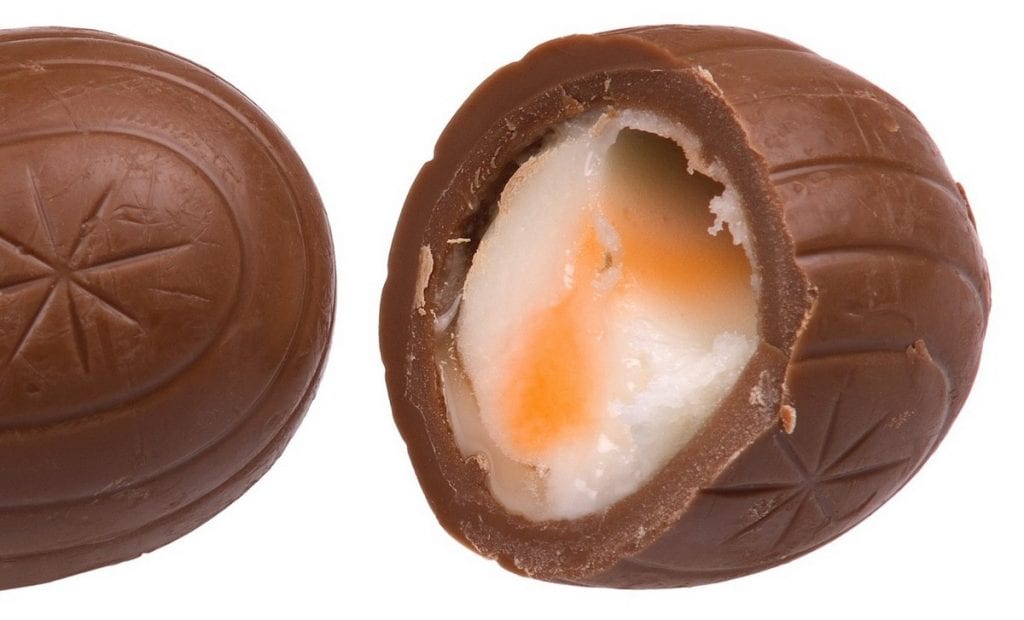
Easter egg hunting in England
Among the most original rituals, the English Easter egg hunt deserves a place of honour: the Easter Egg Hunt is a tradition born in the Victorian era thanks to the Cadbury chocolate company, dedicated to children. On Easter Sunday, children go hunting for eggs in parks and gardens, surrounded by people disguised as Easter bunnies: only those who find the eggs hidden by family members will receive the surprise brought by the Easter Bunny. A highly anticipated event that this year will be celebrated online with the Worldwide Hide: anyone can digitally "hide" an egg anywhere in the world, which children will have to search for using Google Maps. Hunting or not, Cadbury eggs are the favourite of all United Kingdom people: the company is in fact much loved by young and old, founded in 1824 by John Cadbury, who opened a shop in Birmingham that sold, among the various specialties, cacao and chocolate to drink. Today the headquarters are in Uxbridge, London. Today it is the second largest company in the world for the production of confectionery, part of the multinational Mondelez International since 2010. The star product during the Easter period are the Creme Eggs, milk chocolate eggs with a soft white and yellow filling reminiscent of yolk and egg white.
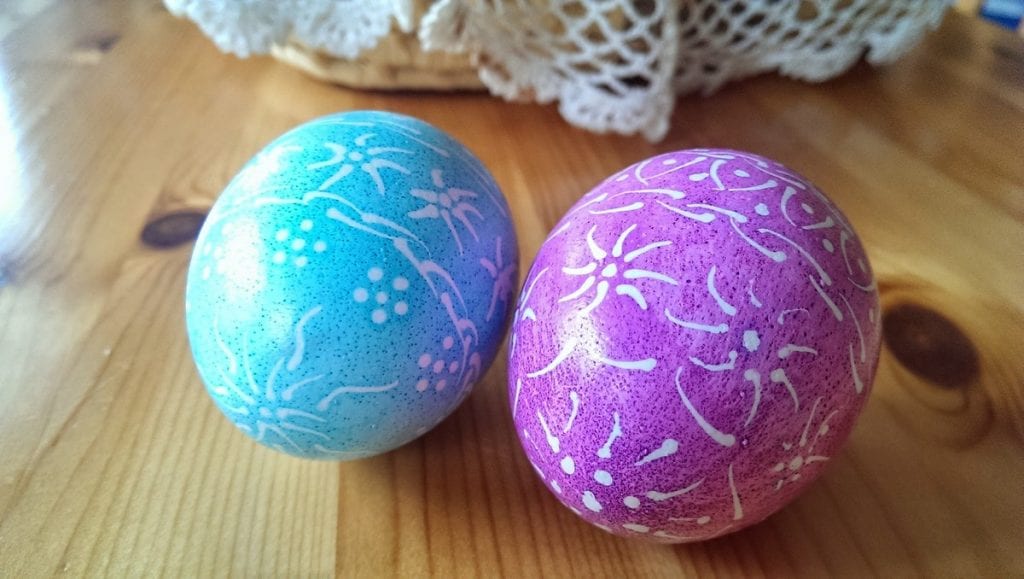
Painted eggs and a blessed basket in Poland
The swieconka, the blessing of the Easter basket as a sign of gratitude to the Lord, marks the beginning of the Easter holidays in Poland. Traditionally, the basket decorated with ribbons and colourful flowers is taken to church on Saturday mornings to be blessed by the priest. The food is then kept aside and stored until Sunday breakfast. The basket contains Maslo, lamb or cross-shaped butter, chrzan, horseradish symbol of the Passion of Christ, kielbasa, a typical Eastern European sausage, and then decorated eggs. They are called pisanki and are embellished with symbols of birth and prosperity, in memory of the Resurrection: they are simple hard-boiled hen's eggs, but painted in a truly original way, present in the country since the 13th century, as evidenced by the discovery of an ancient artefact in Ostòwek. The classic technique for painting them is batik, or the use of wax, but there are also those who colour them in a natural way using yellow-skinned onions, and then enrich them with coloured wool threads.
Easter Egg Roll at the White House
In the United States, the President himself has fun with eggs: the annual White House Easter Egg Roll was born for the first time on April 22, 1878, after President Rutherford B. Hayes decided to open the White House gardens on Easter Monday for all the children who wanted to roll their eggs. A game of ancient origins that consists in letting the eggs slide on the grass for as long as possible without breaking them: this is exactly how it is still done today even in the White House, where it's possible to come across illustrious personalities in the role of the Easter bunny.
Switzerland: giant eggs and egg beating
The Easter bunny also arrives in Switzerland, bearer of chocolate eggs and surprises and who, during the night, hides the gifts in the garden of the house, where the children will then have to look for them by engaging in a fun treasure hunt. In Rougemont, on the other hand, 12 giant chocolate eggs decorated with a theme are exhibited every year, just as if they were sculptures, while in German-speaking Switzerland the eierütschen (literally, "beating of the eggs") takes place, a homespun challenge that consists in breaking with the tip of a hard-boiled egg the shell of the opponent's eggs. A tradition that becomes a public event in Bern, complete with a points competition is staged every year in the heart of the historic centre.
The giant eggs of Argentina
Not only Switzerland has a penchant for large eggs: in Argentina the Easter egg tradition is deeply felt, so much so that every year a giant chocolate egg is unveiled in Bariloche. To be clear, it is an egg of more than 8,000 kilograms with a height of 10 meters: to make it, the work of 70 professional pastry chefs is employed, who at the first light of dawn begin to give chocolate in pieces to the people in line. In past years the total number in attendance was around 50,000!
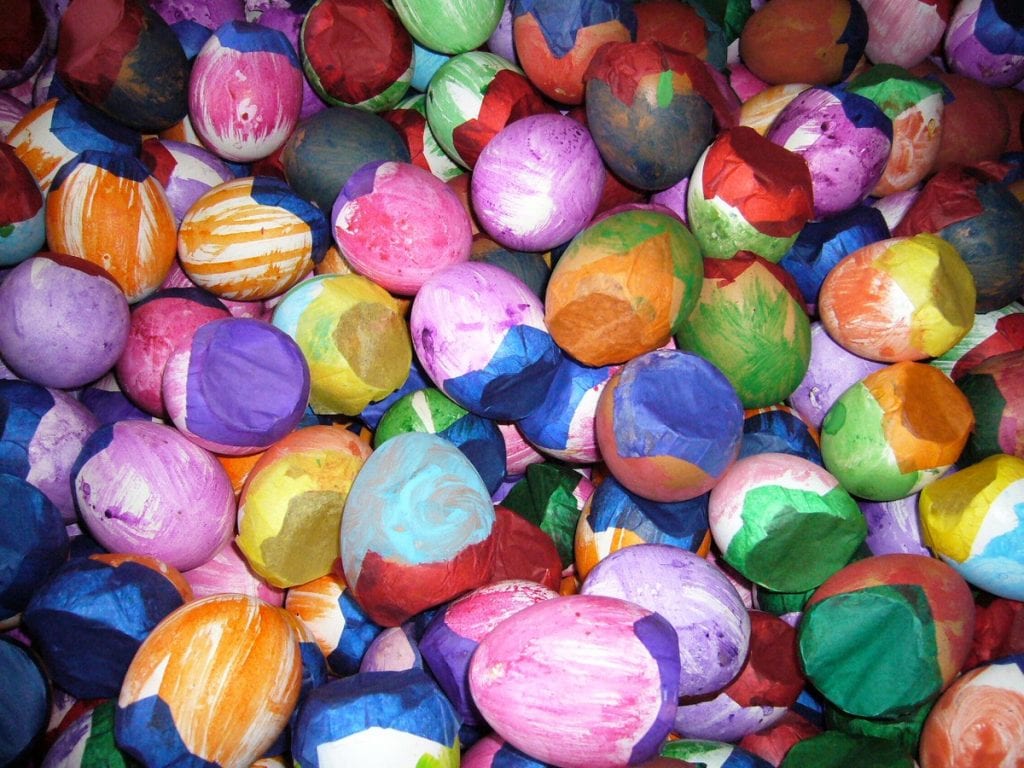
Colourful confetti in Mexico
In Central America, a cheerful and unusual ritual: los cascarones. That is egg shells emptied out and filled with coloured confetti. Tissue paper sheets are used to hold the egg together, but not to worry if the result is not accurate: the eggs will still end up, as per tradition, broken on the heads of friends and relatives as a sign of good luck. No one complains: this seems to be a custom brought by Marco Polo from China, where the shells were filled with spices.
The giant omelette in France
By now it is clear that the key word on Easter day is "abundance." Even the French are well aware of this, for the occasion they prepare one of their specialties in a maxi version: of course, they are not really Easter eggs, but to prepare the giant omelette you definitely need a lot of eggs! It happens in Haux, where every year this huge omelette is served in the main square of the city, prepared with over 4,500 eggs and able to feed more than a thousand people. According to legend, this tradition was started by Napoleon, who fell so much in love with the omelette he tasted in the town that he asked the inhabitants to gather all their eggs they could and prepare a giant one.
by Michela Becchi

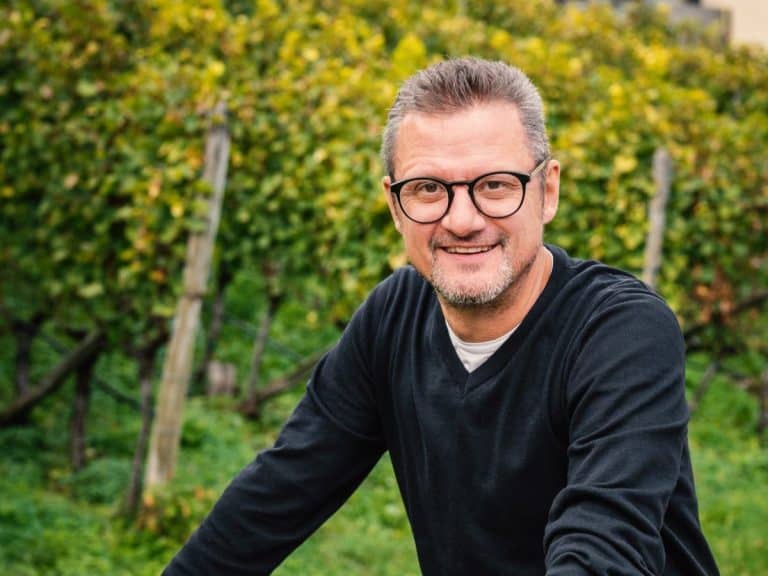 Non-alcoholic wines? Call them what you want, but they’re still a derivative of wine.” An Interview with Martin Foradori
Non-alcoholic wines? Call them what you want, but they’re still a derivative of wine.” An Interview with Martin Foradori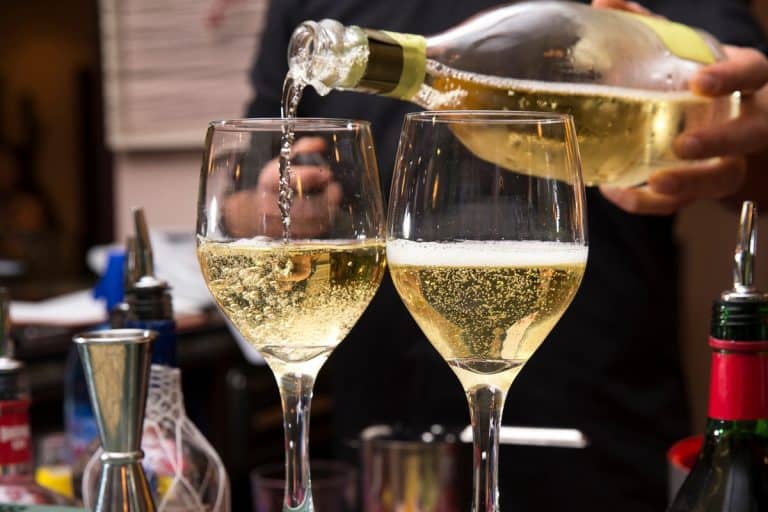 The 8 best Trentodoc wines chosen by Gambero Rosso
The 8 best Trentodoc wines chosen by Gambero Rosso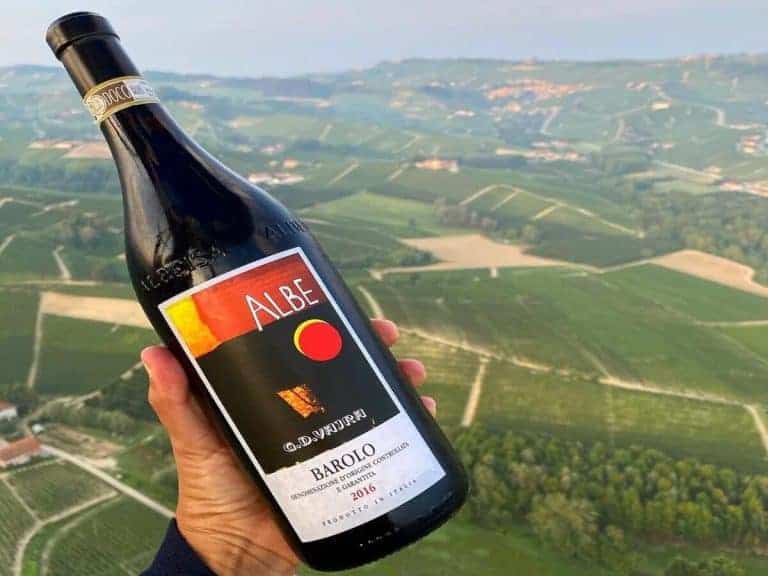 A Piedmont wine enters the top ten of Wine Spectator's "Top 100"
A Piedmont wine enters the top ten of Wine Spectator's "Top 100" Sparkling wines surpass still wines in Italian out-of-home consumption. Most popular during the aperitif
Sparkling wines surpass still wines in Italian out-of-home consumption. Most popular during the aperitif American Barbecue wins a Michelin star for the first time in history
American Barbecue wins a Michelin star for the first time in history